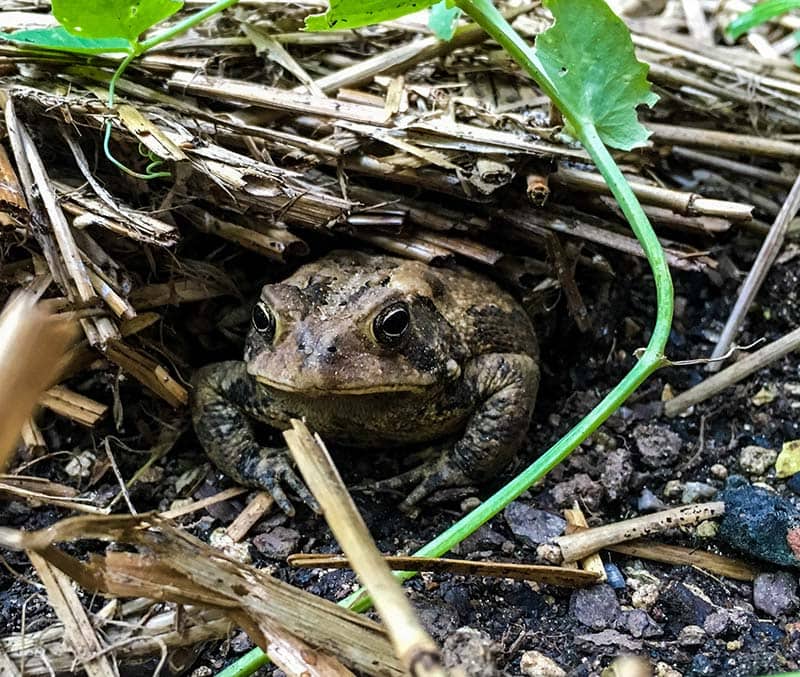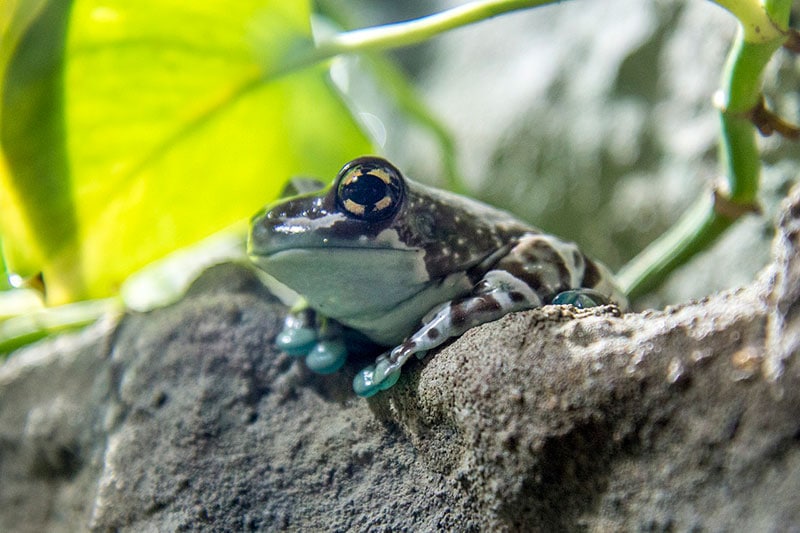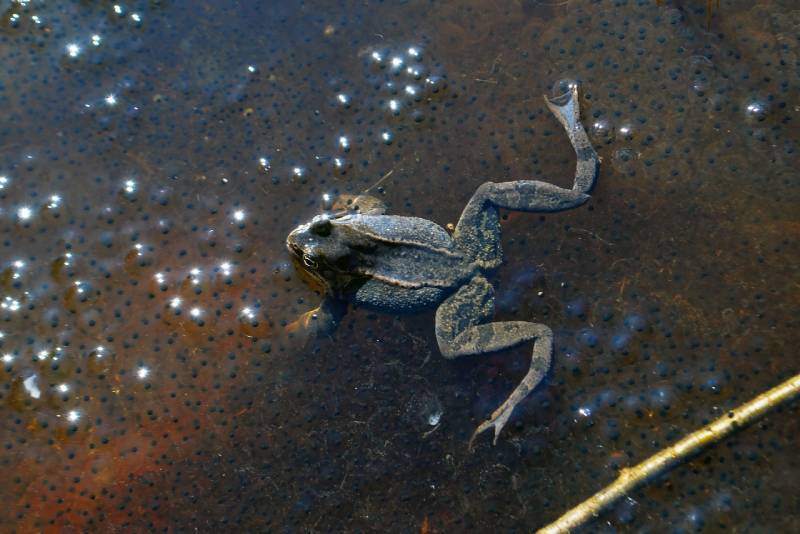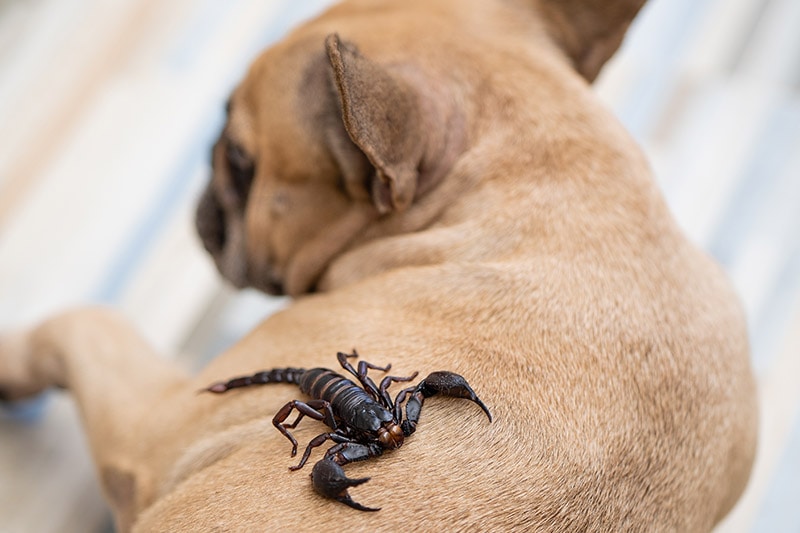5 Best Pet Toad Species That Are Easy to Look After (Vet-Verified Info With Pictures)
Updated on
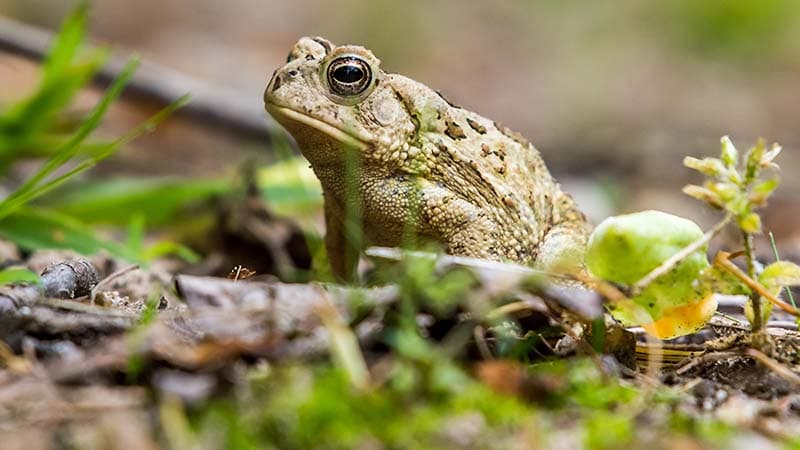
Keeping a toad as a pet can be very rewarding. Often, toads aren’t hard to take care of and don’t require nearly as much work as some other pets. This is due to the fact they’re considered “hands off” pets.
However, just because these animals are easy to care for doesn’t mean that you don’t have to put any work into them. Like any pet, you’ll need to keep your toad fed and healthy. Toads must often be fed live insects—something you’ll need to keep in mind before you adopt one.
If you set up their tank correctly, though, many of these toads can live long lives with relatively minimal care.
Before You Adopt – Considerations for Toads
Toads do make fantastic pets for the right owners. However, if you’re keen on adopting a pet toad and are new to the hobby, there might be a few things you should consider.
Legality
Many states and jurisdictions may have legislation that prevents capturing or owning tadpoles or toads. It’s important to always make sure you have the permission to legally own a toad before deciding to adopt one. If you are in the US, please refer to state laws before deciding to adopt an exotic or wild pet. Elsewhere, please refer to the relevant laws where you reside.
Capturing & Releasing Toads
Capturing wild animals is not advised, as this disrupts local ecosystems. For the same reason, it’s not considered ethically acceptable to release a pet toad in the wild, as this too may disrupt the natural balance of the ecosystem

Health Considerations
All amphibians (including toads) may naturally harbor Salmonella and spread it to humans and other pets. Therefore, toads are not recommended to be kept alongside children, the elderly, pregnant individuals, or those with a compromised immune system. Hygiene is of utmost importance when dealing with toads.
Toxins
All toads are toxic to a certain degree, and they are especially dangerous for pet dogs. The degree of toxicity depends on several factors, including the toad’s species and dietary history. Therefore, toads are best viewed as “hands-off” pets.
The 5 Best Pet Toad Breeds That Are Easy to Look After
1. American Toad (Anaxyrus americanus)

The American Toad is a very common toad found throughout North America. They’re one of the hardiest toads around, so they’re a great choice for beginners. They can grow up to around 4 inches long and live for a remarkably long period of time, with a specimen confirmed to live up to the age of 36 1. Therefore, they’re great for those looking for a long-lived companion. They don’t require much special care, which is what makes them so good for beginners.
However, these toads aren’t as colorful as some other species. They can be attractive, but they don’t have the same “wow” factor some other species do.
American Toads need a good-sized terrarium of about 10 gallons, at least. It must have a secure lid, too, which helps prevent the toad from escaping. The tank needs a humidity between 50 to 70% humidity. A shallow dish of water should be provided, as well as several spots for the toad to hide.
You’ll need to feed these toads live insects, like crickets and mealworms.
2. California Toad (Anaxyrus boreas halophilus)

The California Toad is native to California and a few other western states, too. They’re smaller than the American Toad at around 3 inches long, and they have a slightly shorter lifespan, too. They’re a good option for those interested in a smaller toad, and they will take up less room than many of the other toads on this list.
They’re also less toxic than many toad species out there. Therefore, they are often a much safer choice for handling. They can possibly be an option for kids, who will inevitably want to hold their toad (with supervision, of course).
The California Toad needs about the same size of a tank as the American toad. It’ll also need places to hide and a dish of water. The humidity is the same, too, at between 50% to 70%.
3. Woodhouse’s Toad (Anaxyrus woodhousii)

The Woodhouse’s toad is a medium-sized toad that’s native to the United States and Mexico. They are perhaps best known for their unique sound. The males of this species possess a vocal sac in their throat, which they use to produce a trademark call that resembles a sheep’s bleat.
These toads are nocturnal and, therefore, will likely be asleep under a leaf or their favorite hiding spot within their semi-aquatic habitat. They primarily feed on insects and other live invertebrates. Like other toads, they prefer an environment with high humidity with plenty of cover and low light.
4. Asiatic toad (Bufo gargarizans)

Also known as the Chusan Island toad is a species endemic to Asia, being especially common in China. Though now popular as a pet, it’s historically known to play a very important role in traditional oriental medicine. It is thought their venom and skin has many medicinal uses.
As pets, they’re best kept in humid environments and, like other toads, prefer a live diet on insects and other invertebrates.
5. Asian Giant Toad (Phrynoidis asper)

Also native to Asia, this species is often confused with a larger relative, the giant river toad. Despite their name, they don’t grow exceedingly large. Females are larger than males and reach a size of around 5.5 inches (around 14 centimeters); males tend to top out at around 4 inches (just over 10 centimeters).
These toads are also most active at night and prefer a diet of insects and other amphibians. In addition, they do enjoy a few ramps or other such surfaces to climb up on, as they’re also spotted in trees in nature.
Frequently Asked Questions
Are Toads Easy Pets?
Toads can be easy pets. However, they aren’t the best pets for everyone. There are tons of things you should consider when deciding whether or not to get a pet toad.
Toads can range in size from a few inches to around 10 inches for some species. If you are limited in space, you will want to choose a smaller species. However, smaller species may be active and require just as much room as larger species. Just because a toad is smaller doesn’t mean you can get away with less space.
Toads need a specific environment to thrive. This includes the right temperature, humidity, and substrate. You will also need to provide them with food and water on a regular basis. Setting up their terrarium properly is often one of the hardest parts of caring for them. However, if you can set up their home well, then caring for them is often pretty straightforward.
Some toads are more tolerant of handling than others. Some people are completely okay with not handling their toads at all. Others will want to handle it somewhat. Keep this in mind when you’re choosing a species.
Toads can be rewarding pets for people who are willing to put in the time and effort to care for them. Just because they’re easier than most pets doesn’t mean they don’t require any care.

Do Toads Like Being Held?
Most toads don’t particularly like being held. They are not social animals and can be easily stressed, causing health problems. You can hold a pet toad occasionally. However, you shouldn’t make it a regular habit. Toads don’t often become “tame” like some other pets.
Always wash your hands before handling a toad. Toads have very porous skin, so lotion and other chemicals can irritate them (or even kill them, in some cases). Hold the toad securely with two hands. Falling can cause the toad serious injury or even death, so be extra careful. Preferably, sit while you hold your toad to make falls less troublesome.
Don’t touch the toad’s head or back. These areas are often particularly sensitive, and touching them here may stress the toad out.
No matter what, only handle your toad for a brief period. This prevents the toad from becoming stressed. If you notice your toad becoming stressed, you should stop handling him right away. Stress can cause all sorts of problems for the toad and should be taken seriously.
It is important to remember that toads are wild animals, and they should be respected as such.
Conclusion
Toads can make wonderful beginner pets. They’re anecdotally considered easier to care for than other exotic animals, as long as you set up their habitat correctly.
Some toad species are harder to care for than others, though. Above, we’ve listed five possible species, which should give you plenty to choose from.
Remember, just because a species is considered easy doesn’t mean they don’t require any time. Many of these toads need a couple of hours of care a week. You’ll also need to set up their habitat correctly before you bring them home, which can require hours.
Featured Image Credit: Krumpelman Photography, Shutterstock


